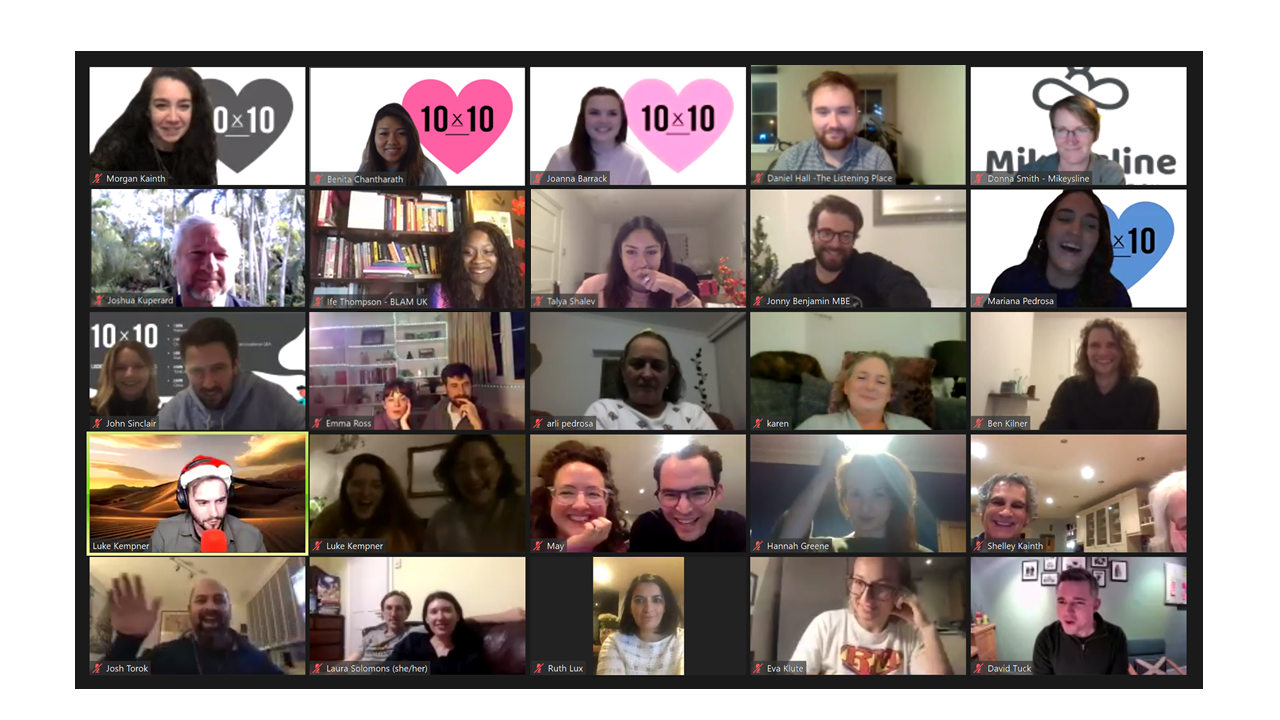

Unit 1: Project Lead
1.0 Welcome & Thank You
Over the coming weeks, you and your team will create an event and raise funds and awareness for charities in your community – it all starts here!
Your first step is to choose if you will do a live, digital or hybrid event, depending on lockdown conditions. Keep in mind, if things change mid-campaign, you can always switch to a different format and we are here to help you every step of the way.
As mentioned before, this Playbook is a guide for all things 10×10 but there is always room for new ideas so don’t be afraid to get creative! If you and your team come up with something new and exciting, please let us know and we can work together to bring it to life.
1.1 10×10 Fact Sheet
We’ve put together an explainer that easily illustrates how 10×10 works – you can use this whenever you need a quick way to show charities, supporters, sponsors, donors etc. what 10×10 is.



1.2 Project Lead Responsibilities
As you can probably guess, the Project Lead role is the most pivotal to the campaign’s success. You’ll collaborate and support the Committee to plan and execute the best possible event and achieve the greatest impact for your chosen social purpose organisations.
The Project Lead is responsible for the leadership and management of the overall project:
- Leading kick-off and campaign conceptualisation
- Managing the team organisation into roles and responsibilities
- Facilitating access to available 10x10HQ resources
- Managing team accountability and motivation (each member is to bring 10 people to be part of your event as an audience member)
- Setting up to end your campaign with a call out for people to join the next 10×10 project in your city
- Supporting the Event Evaluation Lead to coordinate a feedback process
1.3 Your Event Concept & Objectives
Throughout the pandemic, we learnt to adapt quickly to new ways of living. 10×10 pivoted our model and evolved our traditional live events into digital and hybrid events to accommodate lockdowns and restrictions. Now, we are back to live (in person) events!
Event Objectives
- Project Committee members are clear on their responsibility to invite at least 10 friends who each pledge/donate to attend.
- Three grassroots organisations are chosen to pitch to the audience for funding and volunteering support. Organisations are early stage and innovative solving complex social problems in new ways.
- The overall objective is to attract donations and/or sponsorships for all hard costs and deliver a net-zero cost. It should be the Project Committee’s priority to gain support (sponsors, pro bono, in-kind donors) for a venue, food, beverages, prizes (raffle and auctions), plus additional donor matching (corporate and trusts/foundations) and direct donations in support of the three organisations.
Event Execution
- The Project Committee locks in a venue, canapes and beverages (ideally sponsored/free/low bono rate)
- Each guest donates $100 to attend the event and receives 2x$50 charity dollar bills upon arrival as a token of their donation (currency/price will differ between countries)
- Having heard the social purpose organisations pitch, each guest nominates where to invest their money, most will purchase extra charity dollars and support them all!
- Guests enjoy hospitality, networking, entertainment and the buzz of doing good
- You can also have additional fundraising activities such as a raffle, live and/or silent auction.
- Total funds raised are allocated to each organisation according to the proportion of votes they received
Project Goals
Using the core objectives, you can work together to shape your event and set your own goals. Suggestions include:
- An event theme (e.g. three organisations with the same cause area)
- Stretch financial targets
- Event attendance objectives, 100+ attendees
- One of the event (e.g. impactful and serious vs. fun and feel good)
- Number of communications/interactions from marketing
- The production/presentation features of the event
Publish your agreed goals to your team communications to keep them top of mind.
In case you’re curious, check out some digital events hosted by committees during lockdown:
Digital Event Example: London
This was London’s first ever digital event and it was a great success! They went with the usual 10×10 format of having three organisations, and each of them pitched at the event and they brought in a comedian for entertainment who also hosted the auction. You can watch the highlights reel from the main event below.
Digital Event Example: Hong Kong
10x10HK styled their event like a talk show and invited the organisations to have a joint discussion. They also had an auction online that ran during the event, with the hosts making a callout for more bids throughout. For entertainment, they had a few musical performances including members of the Hong Kong Philharmonic Orchestra.
1.4 Project Committee Role Delegation
One of the first tasks for the group is to organise and assign roles. Always remember the HQ team and your Head of City are here to support you!
These are the key roles and a guide to how many people might take on the role (this is flexible, often people combine and share roles):
1) Project Lead (1-2)
Manage the team and execution of the overall campaign.
2) SPO Lead (1-2)
The team liaison with the organisations – assists HQ with the compliance process, facilitates the sharing of marketing assets and guides the organisations on how to pitch.
3) Event Production Lead (1-2)
Venue, food + beverage requirements (collaborating with the Sponsor Lead), talent management (Shark, MC) & on the night logistics.
4) Sponsorship Lead (2-3)
Find supporters to contribute in-kind sponsorship (food + beverage, auction prizes) and matched funding.
5) Marketing & Communications Leads (2-3)
Work with HQ to design marketing and comms materials and ideas to promote your campaign.
6) Finance Lead (1)
Manage the reconciliation for the event and monitor costs and incoming donations/sponsorships.
How roles are chosen:
Committees may have more or less than 10 people, so the above is a guide for a team of 10 which can be adjusted accordingly. Roles are decided as a team. When deciding which role to take on, encourage your team to consider their own strengths and weaknesses in order to best contribute to the project, as well as what they want to gain in terms of skills and experience. If there are too many people interested in the same role, the ultimate decision and role allocation is the responsibility of the Head of City and/or Project Lead.
Once the roles are decided:
- Post the roles in your group’s chat forums (WhatsApp group and shared Google Drive created by 10×10 HQ).
- Request your team to read the their role’s unit in this Playbook.
- If your team are sharing roles, ask them to get together to formulate their joint plan.
- At each meeting you should allow for 5-15 mins to discuss and update the team on each role and their current/upcoming tasks.
- Encourage your team to share their ideas and setbacks early so as a team you can achieve and overcome these together.
- If you get stuck, the Head of City and 10×10 HQ are here to support you – we’re just an email or call away! And, we’re in your WhatsApp group!
Acknowledging your contribution:
Once you have your roles, please send them through to Verina and Callum, along with a headshot. These will be included in the Event Program created for you by 10×10 HQ, and can be shared on social media to promote the event, the organisations and what a great thing you’re doing giving back to your community!
1.5 10×10 Volunteer Agreement
Project Committee Volunteer Agreement
It is important to discuss with your team that by becoming a 10×10 Volunteer, you agree to a basic code of conduct, are respectful and professional, and are making a commitment to collaborate for optimal outcomes for your event. We ask that all team members please complete this form.
Privacy and Non-Disclosure Agreement for Donor Data
Verina will be in contact with the Project Lead and Finance Lead to ensure they read and sign the Privacy and Non-Disclosure Agreement. These are the only two roles that are required to complete this agreement.
Throughout the campaign, these two roles will receive reports and information that includes personal, financial and other information about our donors, attendees, guests, sponsors and supporters. This will include (but not be limited to) donor, registration and other reports spreadsheets and reports containing names and corresponding emails, phone, location and the donation amount – all sensitive data that we are obliged to manage with respect to Privacy Rules and Laws.
Please ensure that you (and anyone else who may need to access sensitive data, e.g. Finance Lead) read and understand the 10×10 Privacy Policy and, in recognition, sign a simple non-disclosure agreement that will ensure the safekeeping of the personal data of your campaign supporters.
1.6 Timeline & Administration
When your Project Committee is established, get out the draft timeline in your Google Drive and plot activities. These will include:
- The kick-off meeting
- Assignment of roles, recording details on the committee contact list in your Google Drive, joining the WhatsApp group as the key communication
- Regular meetings for event planning and management
- SPO Selection deadlines
- Marketing and communications plans
- Securing a venue
- Securing a shark
- Pitch practice
- Preparing the event run sheet
- Wrap up meeting and post-event evaluation.
Please see below for an example of the draft timeline:
TIP: Be ready to alter your timeline REGULARLY – one thing is certain in the business of events, being that nothing is certain. Be fluid and adapt to the changing conditions – sometimes things happen fast, oftentimes it all comes together JUST IN TIME. Keep the faith and keep in touch with 10x10HQ if you are feeling stressed by stretching deadlines and milestones.
There will be some necessary admin throughout the campaign, and Verina will be in touch regularly with reminders and deadlines, such as:
- Ensuring that all Project Committee members add their contact information to the Contact Sheet in your Committee’s Google Drive folder.
- Request that all new Project Committee members are subscribed to 10×10 HQ for email communications by visiting 10×10’s homepage
- Coordinating the submission of content from various stakeholders to 10×10.
- Input into EDMs.
1.7 Evaluation & Reporting
Measuring our impact is almost as important as the campaign itself. We need to continually measure, evaluate and report the work of our global network of volunteers and social purpose partners to inform future strategy, report to key operational supporters and importantly, celebrate together as we achieve great results.
Therefore, the final step in your role as Project Lead is to:
- Send photos and other records of your team and event to 10×10 HQ.
- Write a short report or event summary (120 – 150 words) to 10×10 HQ and your Head of City for their inclusion in their annual report.
- Motivate the Committee to complete the Volunteer Survey.









